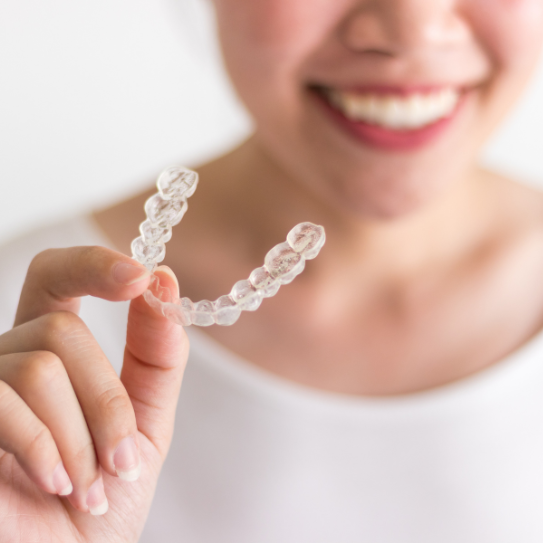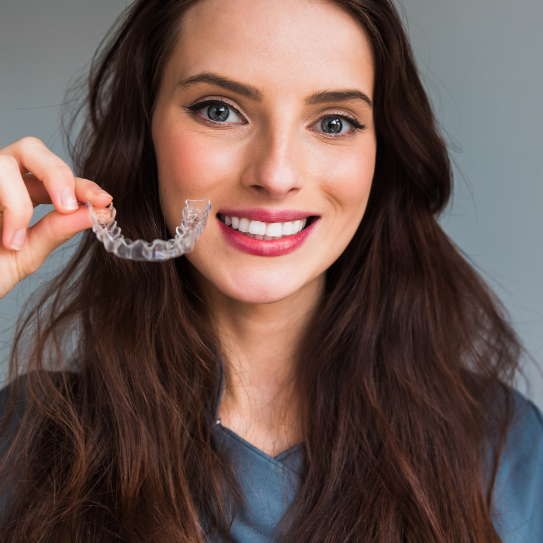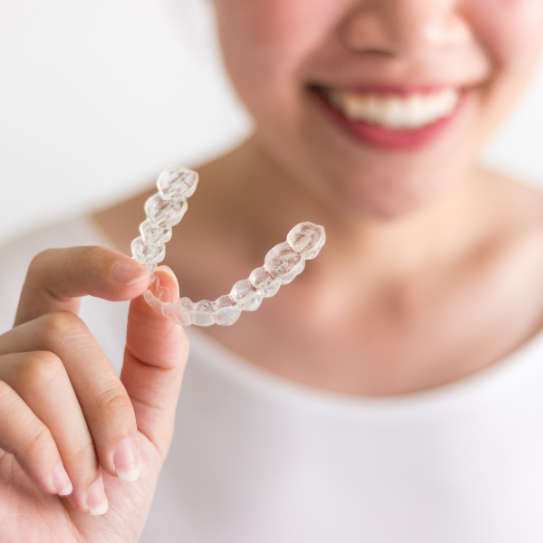8 HELPFUL TIPS FOR INVISALIGN USERS
November 17th, 2022
So, you have concluded that you are ready for straight teeth. And you have decided that Invisalign in Queens, NY, is the way to go. So, how do you take care of Invisalign, you ask? It simply comes down to making daily habits and new routines.
Please don't worry about having to make new adjustments in your life. Follow our eight simple tips, and you'll be on your way toward a straighter and healthier smile.
#1 WEAR YOUR ALIGNERS
It seems obvious, but this step is easier to neglect than you might think. You should wear your aligner for at least 22 hours per day. You must take them out only to eat, drink and clean them.
As your teeth straighten, you may start to slag off and lose the urgency to wear the aligners as prescribed. This will ultimately lead to a longer treatment time. So please get in the habit early and wear those aligners up to the last set.
#2 CHANGE YOUR TRAYS ON SCHEDULE
Every two to three weeks, a new set of aligners are given to continue straightening your teeth a little more than the previous set. You'll have a new smile by the time you get your last set of invisible aligners.
Your treatment is a pretty precise schedule. Although it is not guaranteed, your treatment has a projected end date. Work to change your trays on time to keep pace and aim for your projected end date.
#3 KEEP YOUR OLD ALIGNERS
When you get your new aligners, please hold on to the last set. We highly recommend keeping them in case you lose your current aligners. Wearing the old trays while waiting for your new replacement is a way to protect your progress.
#4 GOOD ORAL HYGIENE
Wearing Invisalign aligners increases the chances of harmful bacteria in your mouth. The best way to combat this buildup is to have good dental health through regular brushing and flossing.
#5 CLEAN YOUR ALIGNERS
Toothpaste and mouthwash are standard bathroom items. These products are great for brushing your teeth but not for clear aligners. Toothpaste is mildly abrasive and will scratch the thermoplastic. The bristles will worsen by changing the scratches from clear to cloudy.
One more thing, please don't soak your aligners in mouthwash. Mouthwash contains colorants that risk staining your aligners.
#6 REMOVE ALIGNERS BEFORE EATING AND DRINKING
Remove your aligners before eating and drinking to avoid bacterial buildup. Food trapped in your aligners leads to bacteria and bad breath.
Dark beverages like coffee, tea, and soda will stain your aligners. So take them out for everything but when drinking water.
#7 RINSE REGULARLY
Rinse your aligner trays often throughout the day. Rinsing removes lingering particles that could contribute to bad breath and discoloration.
#8 PROTECT YOUR ALIGNERS
Time and time again, we have heard stories of people keeping their trays in a napkin while eating. It almost always leads to them landing in the wastebasket. Keep a hard case on hand to hold and protect your aligners when taken out or accidentally thrown away.
VISIT ROBERT W. BRUNO, DDS, FOR INVISALIGN IN QUEENS, NY
If your teeth are crowded or have bigger spaces than you like and don't want the hassle of metal braces, then an aligner treatment plan is the way to go. Invisalign can give you straighter teeth like traditional braces with no metal in sight. Call us at Robert W. Bruno, DDS, for an appointment.




